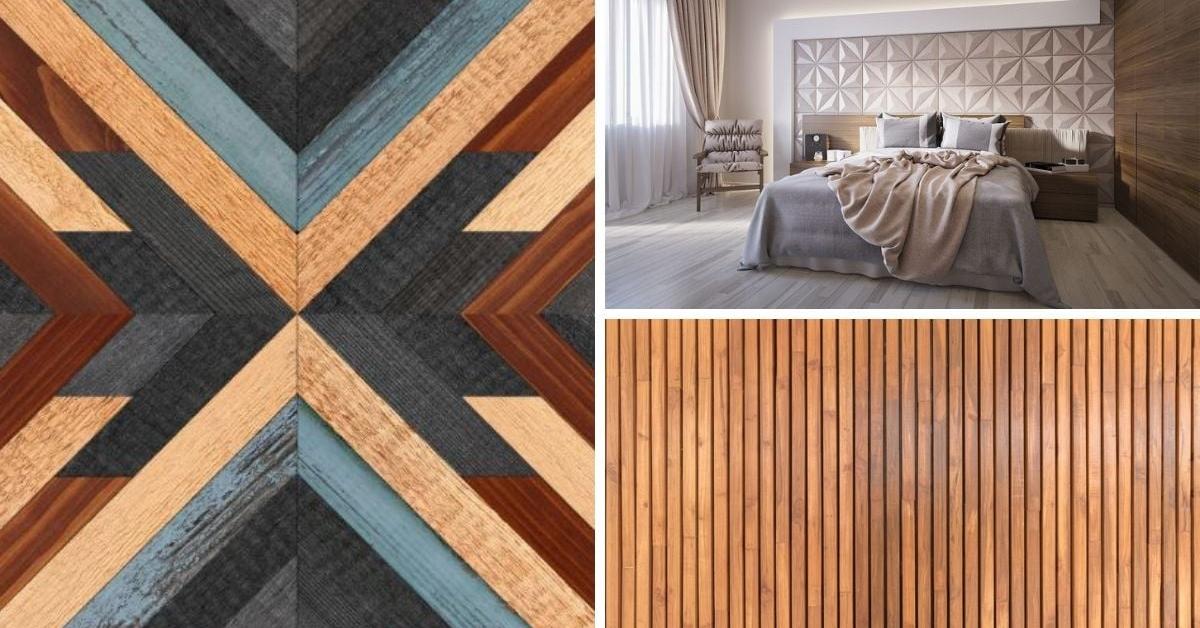In regard to the wood paneling style, there are different kinds with features, aesthetics, and usage; from conventional to modern, wood paneling makes interior spaces alive by adding intrigue, depth, architectural interest, and warmth.
Here are some of the most common types of wood paneling:
Solid Wood Paneling
The solid wood paneling is hand-carved from a single piece of wood that produces a classic and timeless look. Cedar, oak, pine, and walnut are the most prevalent wood species used to make solid wood paneling. Laminate offers excellent durability, but it is a perfect option for customization as it can be stained in different finishes to provide different effects. It is commonly a part of traditional or rustic interiors that reflect warmth and charm on walls, ceilings, and floors.
Plywood Paneling
Plywood paneling is made of multiple layers of wood veneers glued together, giving a product that is strong, stable, and very cheap. The outer layer, or face veneer, comprises various hardwoods or softwoods, whereas the inner ones, or core veneers, serve as a supporting structure. Plywood sheeting is produced in different grades and thicknesses to provide more design options and diverse use cases. In recent years, it has mostly been used for modern interiors; on the other hand, it can be used as clean and sleek when painted or even with veneer.
Engineered Wood Paneling
Engineering wood panels are produced by bonding wood fibers or particles with adhesives, pressured and heated under heat and pressure. The strength, dimensional stability, and resistance to moisture and warping are much better than those of solid wood paneling. Various other wood paneling types F, from one form to another, such as MDF, particleboard, and OSB. It can be finished with veneers, laminates, or paint, which provide versatility in style and design. A laminated veneer is preferred in contemporary design due to its cost-effectiveness and uniformity.
Tongue and Groove Paneling
This Tongue & groove proffers interlocking edges that are the pattern of the panels. The joints are made of a tight and secure fit. The paneling for this style is often installed easily and conceals fasteners, which makes the surface look perfect with no bumps or seams. Tongue and groove paneling could be from solid wood, plywood, or engineered wood, allowing them to work with them on different surfaces. It is widely used for walls, ceilings, and wainscoting in traditional and modern decorations, thus providing an additional visual impact.
Beadboard Paneling
Beadboard paneling is a horizontally oriented composite made up of thin slats with vertical grooves or beads running spaced along the length of each of the slats. It started as a functional and ornamental wall covering in traditional cottages and farmhouses, and now, it has been widely accepted as an ideal interior setting for different styles. With the help of beadboard paneling, walls, ceilings, and cabinetry can be textured and charming, providing a noble look needed for any space. Similar to solid wood or engineered wood, it is available in a wide range of profiles and various finishes to match different types of decorations.
Final Thoughts
Each type of wood wall paneling creates various benefits and a touch of style, bringing unlimited opportunities for interior decoration. Whether you prefer solid wood, plywood affordability, or engineered wood’s versatility, you’ll find a wood paneling option to match any style or budget. Through the knowledge of wood panels and their different types, it will be easier to pick the perfect one for your room that makes it more beautiful and functional.

